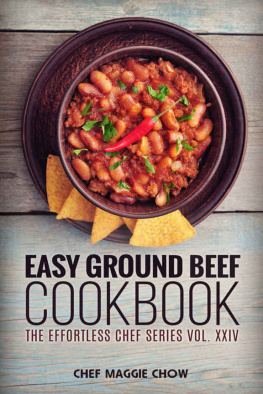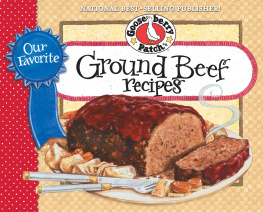The mission of Storey Publishing is to serve our customers by publishing practical information that encourages personal independence in harmony with the environment.
Edited by Deanna F. Cook and Lisa H. Hiley
Art direction and book design by Ash Austin
Indexed by Andrea Chesman
Cover and interior photography Dominic Perri
Additional photography by AlexPro9500/iStock .com,
Photo styling by Paola Andrea Ramirez
Food styling by Joy Howard
Illustrations The Bright Agency/Sayada Ramdial, x,
Text 2022 by Jessica Formicola
Ebook production by Slavica A. Walzl
Ebook version 1.0
May 24, 2022
All rights reserved. No part of this book may be reproduced without written permission from the publisher, except by a reviewer who may quote brief passages or reproduce illustrations in a review with appropriate credits; nor may any part of this book be reproduced, stored in a retrieval system, or transmitted in any form or by any meanselectronic, mechanical, photocopying, recording, or otherwithout written permission from the publisher.
The information in this book is true and complete to the best of our knowledge. All recommendations are made without guarantee on the part of the author or Storey Publishing. The author and publisher disclaim any liability in connection with the use of this information.
Storey books are available at special discounts when purchased in bulk for premiums and sales promotions as well as for fund-raising or educational use. Special editions or book excerpts can also be created to specification. For details, please call 800-827-8673, or send an email to .
Storey Publishing
210 MASS MoCA Way
North Adams, MA 01247
storey.com
Library of Congress Cataloging-in-Publication Data on file
T his book is dedicated to my husband, who believes all recipes would taste better with hot sauce and bacon, and to my kids, who still call all types of protein chicken. Thank you for eating beef nearly every day for 3 months without any complaints.
And to my assistants, Tayler Ross and Holley Stack, who helped me stay sane during the process. And to my parents, in-laws, and sister, who provided unconditional support along the way.
Contents
A Beef-Lovers Dream Come True
Imagine my delight when, after years of writing about food, I was given the opportunity to write an entire cookbook dedicated to beef. Since my early days as a food blogger, Ive been an ambassador for the Certified Angus Beef brand, working with this nonprofit group to educate consumers about beef. They provided me with the opportunity to visit family-owned and family-run cattle ranches, where I was fascinated to learn about the genetics of beef cattle and the cycle of raising beef. Did you know that as many as 100 people and almost 2 years are dedicated to raising an individual cow? I also learned a great deal from professional butchers and chefs, and enjoyed developing recipes of my own.
Once I started working on this book, I quickly realized that I had far more information than pages available. For one thing, there are many more cuts of beef than chicken or pork. And while other proteins might be more easily interchangeable, each cut of beef has its own distinct characteristics and preparation methods. I overwhelmed myself researching the most popular beef dishes, which I had to whittle from 150 to a mere 50. I tried my best to provide myriad flavors and a wide variety of cuts while giving fresh takes on tried-and-true favorites.
These recipes just skim the surface of classic beefy meals. They may remind you of meals that your mom or grandmother prepared or even some old favorites that you had forgotten about. My goal was to bring back some memorable beef dishes but with a modern twist to reflect changes in home-cooking techniques and a greater acceptance of a variety of flavors. That means many of these recipes are associated with specific cultures, although Im not claiming they are authentic. People often tell me that the Italian dishes I make from handed-down family recipes arent authentic, and Im not sure how much more authentic it gets. With this book, Im simply celebrating beef while embracing the beautiful diversity of cuisines that have influenced me.
And I want to share my passion and knowledge of beef with the home cook. I, too, am a home cook, just one who happens to make beef ALL. THE. TIME. Im also a full-time working mom and wife. Everyone, even my young children, enjoys a good meal, but we dont always have the time to make that happen.
Through the years Ive developed four pillars that I live by in the kitchen: salt, seasonings, sauces, and swaps. Using these pillars means that every meal can be a standout, even if its just a matter of using the right salt (not all are created equal!) or a spice you may not have thought to add to beef before. Simple sauces can make or break a dish, and the knowledge of how to make easy swaps can save the day when you suddenly realize youre out of balsamic vinegar.
I hope you will use this cookbook to bring beef to your dinner table more often, learn something new, and have a good time cooking.
Beef Up Your Knowledge
Whether you eat meat every day or just once in a while, beef deserves a place at your table. Its a great source of protein, tastes delicious, and is incredibly versatile, able to take center stage or play a supporting role. But it can be confusing figuring out what the various cuts are, let alone which ones work best with which recipes. Heres a quick introduction to the basics of buying and using beef.
As a postscript, Im a firm believer that we should understand where our food comes from. Whether you buy your meat directly from a local producer, at a farmers market or butcher shop, or in the grocery store, take some time to learn about how it gets to your table.
What Beef Should I Buy?
For many of us, buying chicken or pork is pretty straightforward, but beef presents a medley of confusing choices. So lets begin with a discussion of what you might find for sale. For starters, all beef sold at retail is inspected for safety and wholesomeness by the United States Department of Agriculture (USDA). After a carcass passes inspection, the producer can request that it be graded and (literally) stamped for approval. The different grades of meat are defined as follows.
Prime is the highest quality and accounts for about 9 percent of all beef that is sold. This meat has abundant fat marbling like little snowflakes evenly dispersed through the cut. The high fat content makes for more tender and flavorful cuts.













